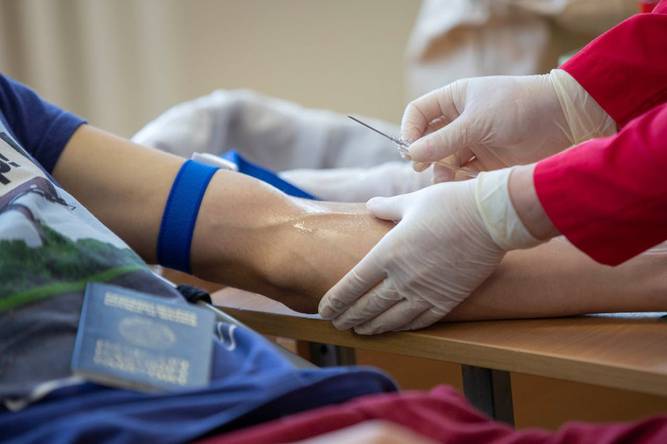In today’s digital age, the way we learn has transformed dramatically. With the rise of online education, many aspiring healthcare professionals are asking: can you really learn phlebotomy skills, particularly needle techniques, through virtual courses? This blog delves into the effectiveness of online phlebotomy training, backed by statistics, expert opinions, and a look at the best available resources. ??

The Rise of Online Learning in Healthcare
The healthcare industry has seen a significant shift towards online education, especially in light of recent global events. According to a report by the National Center for Education Statistics, over 30% of students in healthcare programs are now enrolled in online courses. This trend is not just a temporary response to the pandemic; it reflects a broader acceptance of digital learning methods.
Key Statistics on Online Learning
- Enrollment Growth: From 2019 to 2023, online course enrollment in healthcare fields has increased by 25%.
- Student Satisfaction: A survey conducted by the Online Learning Consortium found that 85% of students felt satisfied with their online learning experience.
- Completion Rates: Online courses in healthcare have a completion rate of approximately 70%, compared to 50% for traditional classroom settings.
These statistics highlight the growing confidence in online education, but how does this translate to practical skills like phlebotomy?
Can You Learn Needle Skills Online?
Learning phlebotomy involves mastering the art of drawing blood, which requires both theoretical knowledge and practical skills. While online courses can provide a solid foundation in the theory of phlebotomy, the question remains: can you effectively learn the hands-on skills required for this profession through a screen?
Advantages of Online Phlebotomy Courses
- Flexibility: Students can learn at their own pace, fitting their studies around work and personal commitments. ⏰
- Access to Resources: Many online courses offer a wealth of resources, including video demonstrations, interactive quizzes, and forums for discussion. ?
- Cost-Effective: Online courses often come at a lower price point compared to traditional in-person training, making them more accessible. ?
Challenges of Online Learning
- Lack of Hands-On Experience: The most significant drawback is the limited opportunity for hands-on practice. While some courses offer virtual simulations, nothing can replace real-life experience.
- Self-Motivation Required: Online learning requires a high degree of self-discipline and motivation, which can be challenging for some students. ?
- Limited Interaction: Students may miss out on the immediate feedback and support that comes from in-person training.
The Best Online Phlebotomy Courses
To help you navigate the options available, here’s a comparison of some of the top online phlebotomy courses:
| Course Name | Duration | Cost | Certification | Hands-On Training | Rating (out of 5) |
|---|---|---|---|---|---|
| Phlebotomy Training Online | 6 weeks | $499 | Yes | Yes (local lab) | 4.5 |
| National Phlebotomy Association | 4 weeks | $450 | Yes | No | 4.0 |
| American Red Cross | 8 weeks | $600 | Yes | Yes (local lab) | 4.8 |
| MedCerts | 5 weeks | $399 | Yes | No | 4.2 |
These courses vary in duration, cost, and the availability of hands-on training. For instance, the American Red Cross offers a comprehensive program that includes local lab experience, which is crucial for mastering needle skills. You can explore more about their offerings on their official website.
The Importance of Hands-On Training
While online courses can provide the theoretical knowledge needed for phlebotomy, hands-on training is essential for developing the necessary skills. Many online programs now partner with local clinics or labs to offer students practical experience. This hybrid model combines the flexibility of online learning with the critical hands-on practice needed to succeed in the field.
The Future of Phlebotomy Training
As technology continues to evolve, so too will the methods of training healthcare professionals. Virtual reality (VR) and augmented reality (AR) are emerging as potential tools for teaching phlebotomy skills. These technologies can simulate real-life scenarios, allowing students to practice their skills in a controlled environment.
Conclusion
In conclusion, while online phlebotomy courses offer a flexible and accessible way to learn the theoretical aspects of the field, they should ideally be complemented by hands-on training to ensure proficiency in needle skills. As the healthcare landscape continues to evolve, embracing a hybrid approach to education may be the key to producing well-rounded phlebotomists ready to meet the demands of the industry. ?
If you're considering a career in phlebotomy, take the time to research your options and find a course that fits your needs. With the right training, you can become a skilled phlebotomist, ready to make a difference in the lives of patients. For more information on phlebotomy training, check out resources like Phlebotomy Training Online and start your journey today!



